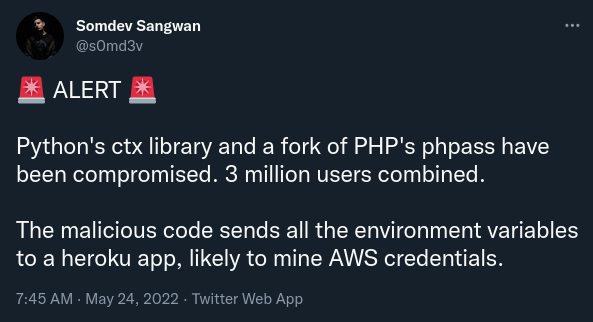It's been a crazy year for everybody with the advent of AI and the rise of GPT-3 + newer LLMs. Nearly the entire world has been talking about it, and we're no exception. Even as a security company, we've been playing around with how we can leverage these tools to help us extract information about CVEs and perform other security work.
We've learned a lot about the AI space because of that work, and, even though we've been working on some really cool stuff, we've also realized that Security isn't the best place for us to be as a startup. It's a tough market with long sales cycles (since only enterprises really care about security), and it's hard to compete as a small player in the space.
That's why we're pivoting and why I'm writing this post today: To announce our new name, LunaBrain, and to describe the work that we've been doing in the AI space. (You can check out our new blog here, and I'll link our GitHub below.)
Why AI?
AI is a crazy market that's changing at an unprecedented rate that, in my opinion, is as impactful to society as how the creation of both personal computers and the internet were. It's going to be important enough that, as a startup trying to build a sustainable business, it's clearly the best place for us to invest our time currently.
And while AI has historically required a PhD to do anything with, the recent advancements in LLMs have made it so that even code monkeys like us can build some really cool stuff. (And we've been doing just that!)
You can see the projects we're building on our new LunaBrain GitHub Organization, and I'll briefly list out a few of the projects we've been working on below.
Our AI Projects
LunaPipe
GitHub Repo (🌟 Stars appreciated!)
Video of Chris showing off how LunaPipe works.
We built a command line tool that you can use to pipe data into ChatGPT and have it perform tasks for you. It's a bit of a crazy idea, but it's also proven to be a very powerful tool. You can use it to generate code, filter output from Bash, or really do anything else that you can imagine fitting into a text prompt.
Example: Create a simple Golang function
$ lunapipe "Write me a go function that prints 'Hello World'"
Here's an example Go function that prints "Hello World" to the console:
```go
package main
import "fmt"
func main() {
fmt.Println("Hello World")
}
Example: Quickly identify the files in an arbitrary directory
$ ls | lunapipe "Based on the files, what language is this repo?"
This repo is written in Go (also known as Golang).
There are a ton of other ideas that we have for this tool, like using Golang templates that can be shared, and we would love if you were willing to give it a shot!
LunaBrain
GitHub Repo (💫)
Chris showing "How to build an AI company" with LunaBrain.
One of the most interesting areas in AI currently is with how it allows us to "compress" information. You can feed in a book and ask ChatGPT to "summarize it in a few paragraphs", and it'll do a pretty good job at it!
This is a really powerful concept that's something we've been exploring with our tool, LunaBrain, to help people build workflows around this concept. Want to get a summary of a blog post? Just paste in the URL and LunaBrain will scrape + summarize it for you. (And stick it into a database that you can search later!)
We're still in the early phases of development of this tool, but it's already something we're using in our daily
workflows. You can play with it on our Discord server in the #bot-testing channel or
you can run it locally yourself.
Our AI Blog + Stream
Finally, we've also been blogging about AI topics like "How Vector Databases Work" and also streaming on YouTube.
If there is anything that you'd like is to blog about, feel free to email me at free@lunasec.io or pop over to the Discord too. I'm always down to talk with other smart folks.
Thank you for reading and for being a part of our startup journey!












 Anyone on this train deserves a much-needed break.
Anyone on this train deserves a much-needed break.
